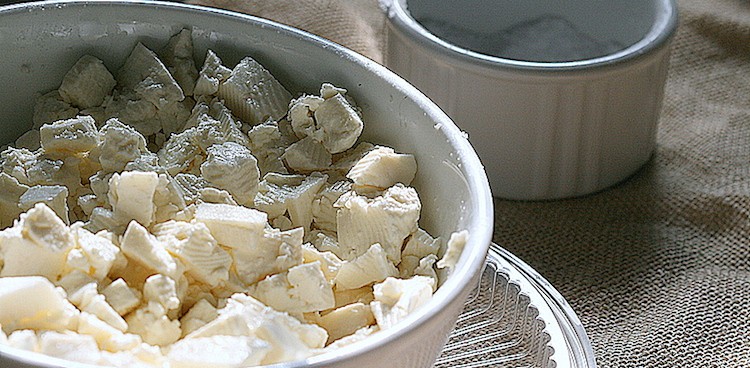
There’s no question that salt is a vital part of the cheesemaking process. Besides adding flavor in both fresh and aged cheeses, it also plays an important role in how curds form into one delicious, cheesy mass. First and foremost, it’s a dehydrating agent, important in hard cheeses since it removes the excess moisture and solidifies the paste. Perhaps most significantly, though, salt stops the growth of harmful germs in any cheese – hard or soft – by making an inhospitable environment for the growth of most bacteria.
However, in today’s health-conscious society, the saltiness of cheese is one of many factors that makes us question whether it’s the best option for our midday snack. Committees have gone so far as to attack cheese for its caloric content, levels of cholesterol and fat, and the way in which it “addicts” us after the first bite. Sodium is the latest nutritional trait in cheese to come under fire. Recently, British researchers from the Consensus Action on Salt & Health (CASH) published in article in the British Medical Journal calling out a cadre of cheese for having high sodium contents, which could be damaging to national guidelines for salt reduction. UK salt reduction strategies currently call for adults to consume less than 6 grams per day, with a goal of 5 grams by 2025 – although currently the average adult eats 8.6 grams.
Among the cheeses under fire are halloumi, Roquefort, feta, Edam, and Cambozola, along with numerous other imported blue cheeses because of the role salt plays in their aging processes. The study, or, more likely, media outlets such as The Guardian and The Telegraph, highlight a claim that these top five saltiest cheeses, in addition to countless others, are saltier than seawater, and therefore heighten the risk of high blood pressure, which leads to heart disease and stroke in adults, as well as obesity.
Well, we did some research here at culture, and find this claim to be untrue in most cases, as the salinity of seawater varies depending on where you are in the world. According to oceanographic studies by the Office of Naval Research, the worldwide average is 3.5 percent, while the Atlantic ocean, especially in British waters, is a full percent less at 2.5 – not a fair standard or claim. Compare that to some of the study’s cheeses of note: halloumi is at 2.71 percent; Roquefort, about 1.8 percent; Feta, 2.5 percent; and Edam, 2.3 percent.
Why not simply reduce or remove the excess salt in these cheeses? Well, as most cheese lovers know, salt simply can’t be reduced in all cheeses — it’s an important part of the aging process. Without it, or even with less of it, bacteria growth and contaminated cheese could become the next great health concern. As Chief Executive Dr. Judith Bryans, of Dairy UK, points out in The Daily Mail: “Lowering salt levels irresponsibly would raise a number of concerns for the cheese industry in terms of food safety and quality.”
So what’s the answer? Don’t hate; moderate. It’s easy to listen to media outlets when they cause a stir, and even easier to commit to massive, blanket fixes rather than small, effectual ones. But, as our Q&A with cheesemonger Luan Schooler highlights, even those on low-sodium diets can enjoy cheese. After all, a happy soul is key to a healthy body. Know your portions and when to stop — your cheese will always be there later. Finally, know your studies. True, hard research just states the facts, and it’s up to media outlets and the public to interpret it. As for us, we’ll take our cheese just the way it is, thanks.
Photo Credit: Kjunstorm via Compfight cc



